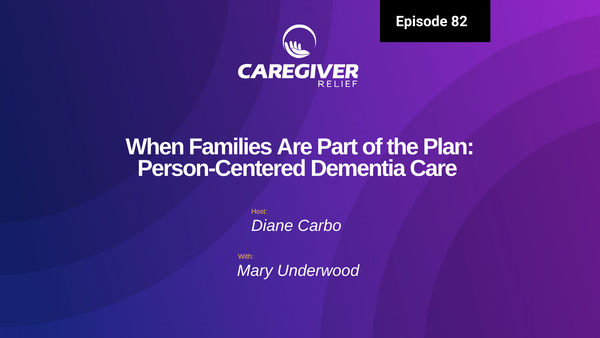Understanding Tactile Hallucinations

Tactile hallucinations are a type of sensory misperception, where an individual perceives physical sensations that don't actually exist. It is important to understand tactile hallucination as it can be a symptom of a mental illness such as schizophrenia or bipolar disorder, and can be extremely distressing for the person it affects.
Tactile hallucinations can vary in intensity from mild sensations to more severe, uncontrollable episodes that can be quite distressing. They can occur anywhere on the body, from the head to the hands and feet. The most common areas to experience tactile hallucinations are the face, hands, and feet.
The sensations associated with tactile hallucinations can range from feeling insects crawling on the skin, or invisible wires wrapping around the limbs; to feeling like there is a piece of clothing on the skin that isn't actually there, or feeling a phantom limb.
It is important to note that tactile hallucinations are not the same as feeling someone touching you. The sensation felt is unprovoked and usually occurs when a person is at rest. In comparison, feeling something or someone touching you is usually accompanied by actual physical contact.
Understanding tactile hallucination is key to providing effective treatment and support for people who are affected by the condition. It is also important to remember that the experiences of someone with tactile hallucination can differ greatly depending on the cause. This guide will explore the causes, symptoms, diagnosis, and treatments of tactile hallucination, as well as strategies for managing and living with the condition.
Signs of Tactile Hallucinations
Definition and Types of Hallucinations
What is a Hallucination?
A hallucination is a false perception of objects or events involving the senses: sight, sound, smell, touch, and taste. Hallucinations seem real, but they’re not. Chemical reactions and abnormalities in the brain often cause these experiences. Hallucinations are typically a symptom of psychotic disorders, particularly schizophrenia spectrum disorders. They can also result from substance use, such as recreational drugs, and some temporary situations. A person may experience a hallucination with or without the insight that what they’re experiencing isn’t real. When a person believes their hallucination is real, it’s considered a psychotic symptom.
Types of Hallucinations
There are several different types of hallucinations, each involving different sensory modalities. Visual hallucinations involve seeing things that aren’t there, while auditory hallucinations involve hearing sounds or voices. Olfactory hallucinations involve smelling odors that have no physical source, and gustatory hallucinations involve tasting something that isn’t present. Tactile hallucinations, as discussed, involve feeling sensations on the skin that aren’t real.
Additionally, there are sleep-related hallucinations, such as hypnagogic hallucinations, which occur when falling asleep, and hypnopompic hallucinations, which occur when waking up. These types of hallucinations can be particularly disorienting and are often linked to sleep disorders and other mental health conditions.
Understanding the different types of hallucinations and their causes is crucial for proper diagnosis and treatment. Hallucinations can be a symptom of various mental health conditions, neurological conditions, and substance use, and addressing the underlying cause is key to effective treatment.
Causes of Tactile Hallucinations
Tactile hallucinations can have many causes, including mental illness, medication side-effects, and physical illnesses. Neurological conditions such as Parkinson's disease can also lead to tactile hallucinations. They can be caused by a variety of factors ranging from substances such as drugs or alcohol to medical conditions such as epilepsy or Parkinson’s disease. In some cases, the cause may be unknown.
Schizophrenia Spectrum Disorders
Mental illness, such as schizophrenia, is one of the most common causes of tactile hallucinations. People with schizophrenia often experience tactile sensations that are not real, such as feeling something crawling on the skin or feeling an object such as a bug or a snake. Tactile hallucinations can also be a symptom of other psychotic disorders and psychotic symptoms, highlighting the complexity of diagnosing and understanding these phenomena.
Medication Side-Effects and Drug Induced Tactile Hallucinations
Certain medications may have side-effects that can lead to tactile hallucinations. Antidepressants, antipsychotics, anticonvulsants, and other psychiatric drugs can cause tactile hallucinations in some people. It is important to talk to a doctor if you are experiencing any side-effects of a new medication.
Physical Illnesses
Certain physical illnesses can also cause tactile hallucinations, such as brain tumors, stroke, or multiple sclerosis. In some cases, the hallucinations may be caused by damage to the nerves in the hands or feet. Drug induced tactile hallucinations are a significant concern in the context of substance use. If you have a medical condition that could be causing your tactile hallucinations, it is important to talk to your doctor about it.
Substance-Induced Tactile Hallucinations
Substance-induced tactile hallucinations are a type of hallucination that involves perceiving sensations on the skin, such as touch, pressure, or pain, as a result of substance use. Recreational drugs, such as cocaine and amphetamines, are well-known for causing these types of hallucinations. For instance, users might feel as though insects are crawling on their skin, a sensation often referred to as “coke bugs.”
Certain medications can also lead to tactile hallucinations. Antimalarial drugs, antibiotics, and even some psychiatric medications have been reported to cause these sensations. Additionally, conditions like postpartum psychosis and post-traumatic stress disorder can also result in tactile hallucinations, particularly when secondary psychotic features are present.
Understanding the link between substance use and tactile hallucinations is essential for both prevention and treatment. If you or someone you know is experiencing these symptoms, it’s important to seek medical advice to address the underlying cause and develop an appropriate treatment plan.
Symptoms of Tactile Hallucination
Tactile hallucination occurs when a person experiences sensations in their body that are not connected to any real physical stimuli. These can range from feeling pressure, a sensation of being touched, or the presence of a foreign object. The sensory modalities involved in tactile hallucinations can include various types of sensations such as tactile, visual, auditory, olfactory, and gustatory, which are systematically assessed to understand their characteristics and interrelations.
Other common symptoms of tactile hallucinations include feeling a phantom limb after the actual limb has been removed, or feeling a tingling sensation on the skin without any stimulus. Victims of tactile hallucination may also experience a heightened sense of touch, known as ‘hyperesthesia’.
Common symptoms experienced by those with tactile hallucinations include:
- Feeling sensations of pressure, touch or movement
- A sensation of a phantom limb after a limb has been removed
- Tingling sensations on the skin without any stimulus
- Heightened sensitivity to touch, known as hyperesthesia
It is important to note that not all tactile hallucinations are the same and different people may experience different types and patterns of sensation. Furthermore, depending on the individual, the severity of the hallucinations can vary greatly.
When it comes to diagnosing a tactile hallucination, it’s important to understand the processes involved. This is because a correct diagnosis can help guide an appropriate treatment plan, and ensure that the patient gets the right care they need.
The process of diagnosis typically begins with a physical exam, which can help rule out any other potential causes of the symptoms, such as neurological problems or sensory disorders. During the physical exam, the medical professional will look for any signs of a physical condition that may be causing the hallucinatory sensations, such as infections or conditions in the skin or muscles.
The next stage is a more thorough psychological evaluation. This part of the diagnosis involves interviewing the patient to get a better understanding of their mental state. Questions will cover the onset of the tactile hallucination, its frequency and intensity, as well as any patterns associated with it. Furthermore, the patient will be asked to describe their beliefs, feelings, and reactions regarding the tactile hallucination.
Once all the information has been collected, the doctor will make a diagnosis based on their own findings as well as feedback from the patient. If the doctor suspects that the patient is suffering from a mental illness, they might refer them to a psychiatrist for further testing. Depending on the specific diagnosis, the doctor might also prescribe a course of medication to help manage the symptoms.
In summary, the diagnostic process for tactile hallucinations includes a physical examination, a psychological evaluation, and possibly further testing if necessary. It’s important to note that the diagnosis should be based on careful consideration of all the evidence, and not just on one factor alone. With the right diagnosis and treatment plan, tactile hallucinations can often be managed and reduced.
When it comes to treating tactile hallucinations, there are several ways to approach the issue. Psychotherapy is one of the most effective treatment options for tactile hallucinations. This type of therapy helps individuals to better understand their hallucinations and provides them with coping tools to manage the symptoms. Medications are also used to treat hallucinations. Certain medications help to reduce the intensity of the hallucinations, while others can help to prevent them from occurring. Additionally, lifestyle changes such as getting plenty of rest, eating a balanced diet, and exercising regularly can help in managing the symptoms of tactile hallucinations. These lifestyle adjustments can be beneficial in helping individuals cope with the symptoms and reduce the impact a hallucination has on daily life.
Tactile hallucinations are one of the more common types of hallucinations experienced by people suffering from mental illness. These types of sensory disruptions can be both intense and disorienting, making it important to understand what they are and why they occur. In this section, we will cover the various types of tactile hallucinations and explain how they differ from other types of hallucinations.
There are several types of tactile hallucinations that can cause a range of symptoms. The most common type is the feeling of something touching or pressing against the skin, such as an object brushing against you or a phantom limb. This type of tactile hallucination can also manifest as a crawling sensation or an overall pressure on the body. Another type of tactile sensation is tingling or pins and needles, which is often accompanied by feelings of fear and anxiety.
Other types of tactile hallucinations include feeling internal organs moving, feeling invisible hands or legs, feeling vibrations in the body, and hearing the sound of buzzing or humming. In rare cases, some people may also experience extreme sensations like electric shocks or burning sensations.
Tactile hallucinations can be caused by a variety of factors, including biochemical imbalances, sleep deprivation, and environmental factors. They may also be linked to certain types of mental illnesses, such as schizophrenia, bipolar disorder, and post-traumatic stress disorder. Similarly, certain medications—such as antidepressants, antipsychotics, and stimulants—can also cause tactile hallucinations. Lastly, physical illnesses, such as multiple sclerosis, may also be linked to tactile hallucination.
Understanding the different types of tactile hallucinations and the potential causes is key to diagnosing and treating these symptoms. If you are experiencing any type of issue related to tactile hallucinations, contact your doctor for a proper evaluation.

Diagnosis and Treatment
Diagnosis
Diagnosing hallucinations typically involves a comprehensive medical and psychological evaluation. This process may include a physical examination, laboratory tests, and a detailed psychological assessment. The goal is to identify any underlying causes, whether they are related to mental health conditions, neurological conditions, or substance use.
Hallucinations can be a symptom of various mental health conditions, including schizophrenia spectrum disorders, psychotic disorders, and major depressive disorder. They can also be linked to neurological conditions like Parkinson’s disease. During the evaluation, healthcare providers will look for signs of these conditions and may use imaging studies or other diagnostic tools to gather more information.
Perspectives from Sufferers
Living with a tactile hallucination can have a huge impact on a person’s life. To gain an understanding of the experiences people who suffer from them go through, it is important to hear directly from those who are affected.
By interviewing people with tactile hallucinations, we can gain insight into how they perceive them. Many sufferers of tactile hallucinations report feeling scared and confused as a feeling of an “”invisible object”” touches them. Some also feel a deeper insecurity as it is difficult to explain what they experience. These feelings can often be accompanied by anxiety, distress, and frustration.
To get a better understanding of the reality of living with a tactile hallucination, let’s hear from some of those who are affected. One sufferer said: “At first I thought I was going crazy, and it terrified me. It took me a long time to accept that this was a real thing, and there were treatments available. I was so relieved to find out I wasn’t alone.”
Another sufferer described their experience as feeling like they were “being tortured without anyone else knowing what was happening.”
This further demonstrates the fact that living with a tactile hallucination can have serious psychological consequences, making it all the more important for those affected to have access to support and resources to help them cope.
Living with tactile hallucinations can be incredibly challenging and isolating. Experiencing phantom sensations that aren’t there, or feeling objects that aren’t actually there, can make everyday tasks difficult and it can be hard to explain what you are going through to others. Fortunately, there are strategies you can use to manage your tactile hallucinations and reduce their effects on your daily life. A mental health professional can help individuals develop coping strategies to manage their tactile hallucinations.
Here are some practical tips for dealing with tactile hallucinations:
- Identify Triggers: Track any situations, events, or activities that may trigger your tactile hallucinations and take measures to avoid them or minimize their impact.
- Maintain a Regular Sleep Schedule: Lack of sleep has been known to increase the intensity of tactile hallucinations, so making sure you get enough sleep each night is essential.
- Practice Relaxation Techniques: Spend some time each day practicing relaxation techniques like deep breathing, meditation, and yoga to reduce stress and tension.
- Stay Busy: Keeping yourself distracted with hobbies or activities can help take your mind off your tactile hallucinations and make them less disruptive.
- Be Open and Honest: Don’t be afraid to talk about your tactile hallucinations with people you trust. Talking about the experience can help reduce the stigma and provide emotional support.
- Seek Professional Help: If you feel overwhelmed by your tactile hallucinations, consider speaking with a mental health professional who can provide additional strategies for managing them.
By implementing these strategies, you can develop a personalized plan for managing your tactile hallucinations, and take back some control of your life.
Coping with tactile hallucinations can be a difficult and overwhelming experience. People who suffer from tactile hallucinations can benefit from having a strong support system of family, friends, or even a mental health professional. While there is no cure for tactile hallucinations, there are certain strategies that can help sufferers cope with them.
For those living with tactile hallucinations, here are some tips for managing the condition:
• Reach out to a mental health professional for guidance on how to manage your condition. A therapist or psychiatrist can provide you with practical tips for dealing with tactile hallucinations.
• Learn relaxation techniques such as meditation and breathing exercises to help reduce stress levels. By reducing stress, you may be able to manage your symptoms more effectively.
• Spend time in nature and engage in activities that bring you peace and joy. Connecting with nature can help relieve symptoms and feelings of distress.
• Make sure to get plenty of rest and follow a healthy diet. Eating nutritious foods and getting enough sleep can help keep your mind and body healthy and better able to cope with tactile hallucinations.
• Find other people who understand what you’re going through and have similar experiences. Joining a support group or online community can be a great way to connect with others and share experiences.
Family and friends of those living with tactile hallucinations can also help in a number of ways. Here are some tips for supporting a loved one:
• Educate yourself about tactile hallucinations and the condition your loved one is facing. The more knowledge you have, the better equipped you will be to offer support.
• Listen non-judgmentally and be understanding. Offer reassurance that they are not alone and that their feelings are valid.
• Ask open-ended questions and be patient. Let your loved one take their time to process and answer.
• Offer practical help and support. Assist them with daily tasks or errands if needed.
• Encourage them to seek professional help. Remind them that seeking treatment is a sign of strength and not weakness.
By implementing these strategies and seeking help when needed, those suffering from tactile hallucinations can learn to cope with their condition and live a fulfilling life.
Tactile hallucinations are an intriguing topic that can involve feeling objects or sensations that are not actually present. They can affect people of all ages and can be caused by mental illness, physical illnesses, or even medication side effects. It is important to understand the different symptoms and causes of tactile hallucinations, as well as the treatments and strategies available for managing them.
FAQ: Understanding Tactile Hallucinations
What are tactile hallucinations?
Tactile hallucinations are a type of sensory experience where an individual perceives physical sensations, such as insects crawling on or under their skin, that are not actually present. These sensations are a relatively common symptom in certain mental health and neurological conditions.
What causes tactile hallucinations?
Tactile hallucinations can be caused by various factors, including:
- Mental health disorders like schizophrenia spectrum disorders, major depressive disorder, and bipolar disorder.
- Neurological conditions such as Parkinson's disease, Alzheimer's disease, and Lewy body dementia.
- Substance use or misuse, including recreational drugs and certain medications.
- Sleep disorders like hypnagogic (while falling asleep) and hypnopompic (while waking up) hallucinations.
- Medical conditions, including terminal illnesses or issues affecting the nervous system.
How are tactile hallucinations different from other types of hallucinations?
Tactile hallucinations involve bodily sensations. Other types include:
- Auditory hallucinations: Hearing voices or sounds that aren’t real.
- Visual hallucinations: Seeing objects, people, or lights that don’t exist.
- Olfactory hallucinations: Smelling odors that aren’t present.
- Gustatory hallucinations: Tasting things that aren’t there.
Can tactile hallucinations occur with other psychotic symptoms?
Yes, tactile hallucinations often occur alongside other psychotic symptoms, such as auditory and visual hallucinations, as part of psychotic disorders or major psychiatric illnesses.
Are tactile hallucinations linked to drug use or misuse?
Yes, drug-induced tactile hallucinations are a common symptom of substance use or misuse, including the effects of taking or withdrawing from recreational drugs and certain medications.
How are tactile hallucinations diagnosed?
A psychiatric evaluation and a detailed medical history are typically required. Diagnostic tools like the Diagnostic and Statistical Manual of Mental Disorders (DSM) may be used. Blood tests or neurological imaging might also be performed to rule out medical conditions.
What are the treatment options for tactile hallucinations?
Treatment depends on the underlying cause but may include:
- Medication: Antipsychotic medications, mood stabilizers, or other prescribed medication tailored to the diagnosis.
- Psychiatric treatment: Therapy for managing symptoms and developing coping strategies.
- Medical treatment: Addressing underlying neurological or medical conditions.
- Lifestyle adjustments: Improving sleep, reducing stress, and avoiding triggers like substance use.
What coping strategies can help manage tactile hallucinations?
- Relaxation techniques: Deep breathing or mindfulness to reduce stress.
- Transcranial magnetic stimulation (TMS): A treatment option in some cases.
- Behavioral therapy: To help patients differentiate between hallucinations and reality.
Are tactile hallucinations common in specific conditions?
Yes, they are a common symptom in conditions like schizophrenia, Parkinson's disease, and substance-induced psychosis. They can also occur with Charles Bonnet syndrome or phantom limb syndrome.
When should I seek professional help?
Seek help if you or someone you know:
- Frequently experiences hallucinations of any type.
- Exhibits other psychotic features, such as delusions or paranoia.
- Has a history of mental illness or substance misuse.
- Experiences hallucinations caused by a medical or neurological condition.
What are hypnagogic and hypnopompic hallucinations, and how do they relate to tactile hallucinations?
- Hypnagogic hallucinations occur as a person is falling asleep, while hypnopompic hallucinations happen as they wake up. These hallucinations can involve tactile sensations, such as feeling someone touching or grabbing you, and are often linked to sleep disorders or sleep deprivation.
How do tactile hallucinations manifest in neurological conditions like Parkinson’s disease or Alzheimer’s disease?
- In Parkinson’s disease, tactile hallucinations may occur alongside other sensory modalities like auditory or visual hallucinations. In Alzheimer’s disease, they may appear due to disruptions in the brain areas responsible for processing sensory input.
Can tactile hallucinations be caused by medical treatments or certain medications?
- Yes, certain medications, particularly those affecting the brain’s nervous system or prescribed for psychiatric disorders, can cause induced tactile hallucinations as a side effect.
How do tactile hallucinations relate to phantom limb syndrome?
- Phantom limb syndrome involves tactile sensations or pain in a limb that has been amputated. Although not classified as hallucinations in clinical practice, the sensations share similarities with tactile hallucinations in their reliance on the brain’s sensory interpretation.
Are tactile hallucinations more common in individuals with sleep deprivation or stress?
- Yes, sleep deprivation and high stress levels can increase the risk of experiencing tactile hallucinations as the brain’s ability to process sensory information becomes impaired.
What role do relaxation techniques play in managing tactile hallucinations?
- Relaxation techniques, such as mindfulness meditation and progressive muscle relaxation, can help reduce the stress and anxiety that often exacerbate hallucinations.
How are sensory modalities involved in hallucinations?
- Sensory modalities such as touch (tactile), sight (visual), hearing (auditory), smell (olfactory), and taste (gustatory) can all be involved in hallucinations, either individually or in combination.
How do clinicians use the Diagnostic and Statistical Manual (DSM) to classify tactile hallucinations?
- The DSM helps clinicians classify tactile hallucinations under specific psychiatric disorders, such as schizophrenia spectrum disorders or psychotic features in mood disorders, aiding in diagnosis and treatment planning.
What is the connection between tactile hallucinations and drug misuse or recreational drug use?
- Recreational drug use or misuse can lead to drug-induced tactile hallucinations. Substances that alter brain chemistry may result in sensations like insects crawling on the skin, commonly known as "formication."
Can tactile hallucinations occur in individuals with terminal illnesses or other severe medical conditions?
- Yes, tactile hallucinations may be experienced by individuals with terminal illnesses due to the effects of the illness, medications, or changes in the brain's ability to process sensory input.
These additional questions and answers provide further insight into the various causes, manifestations, and management strategies for tactile hallucinations.
You might also like this article:







